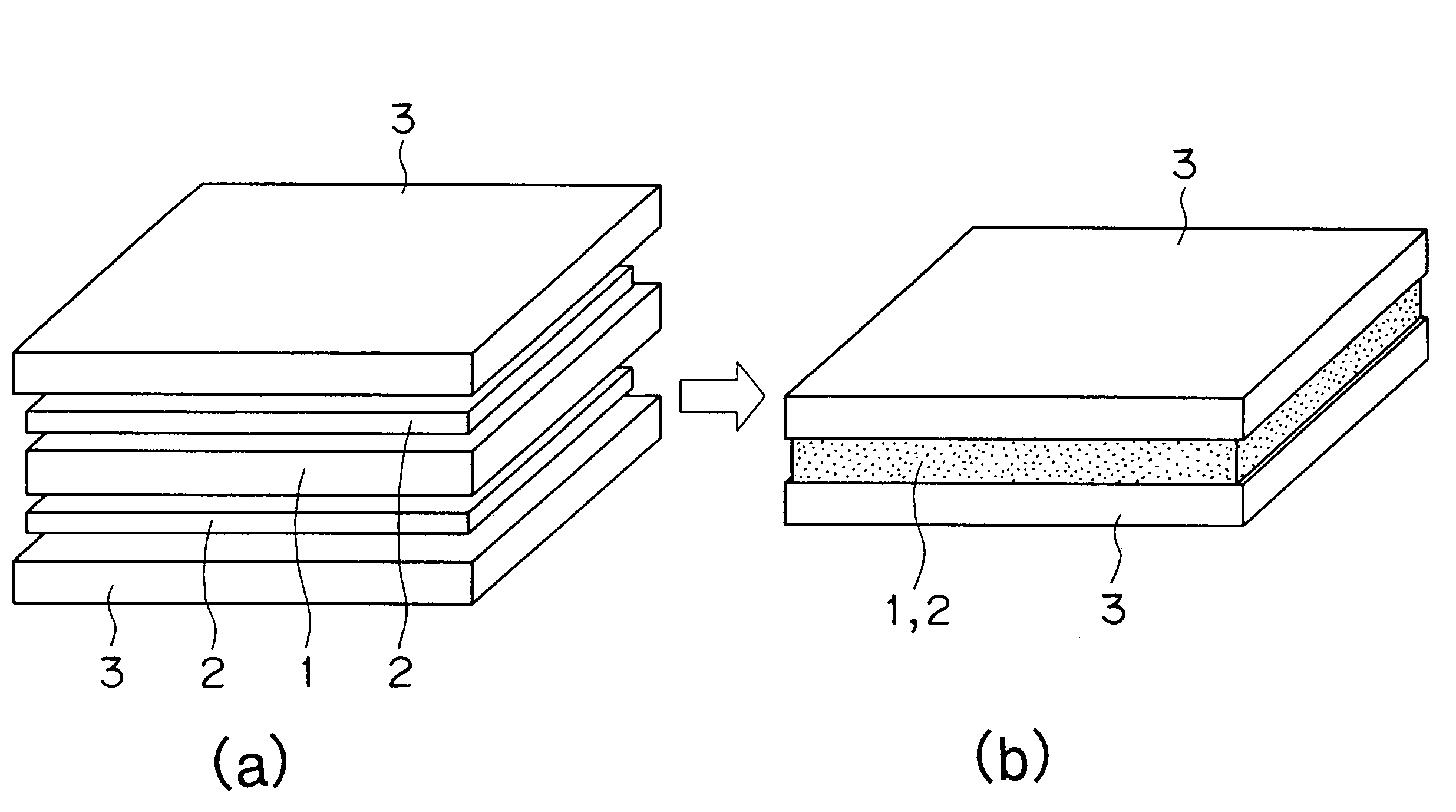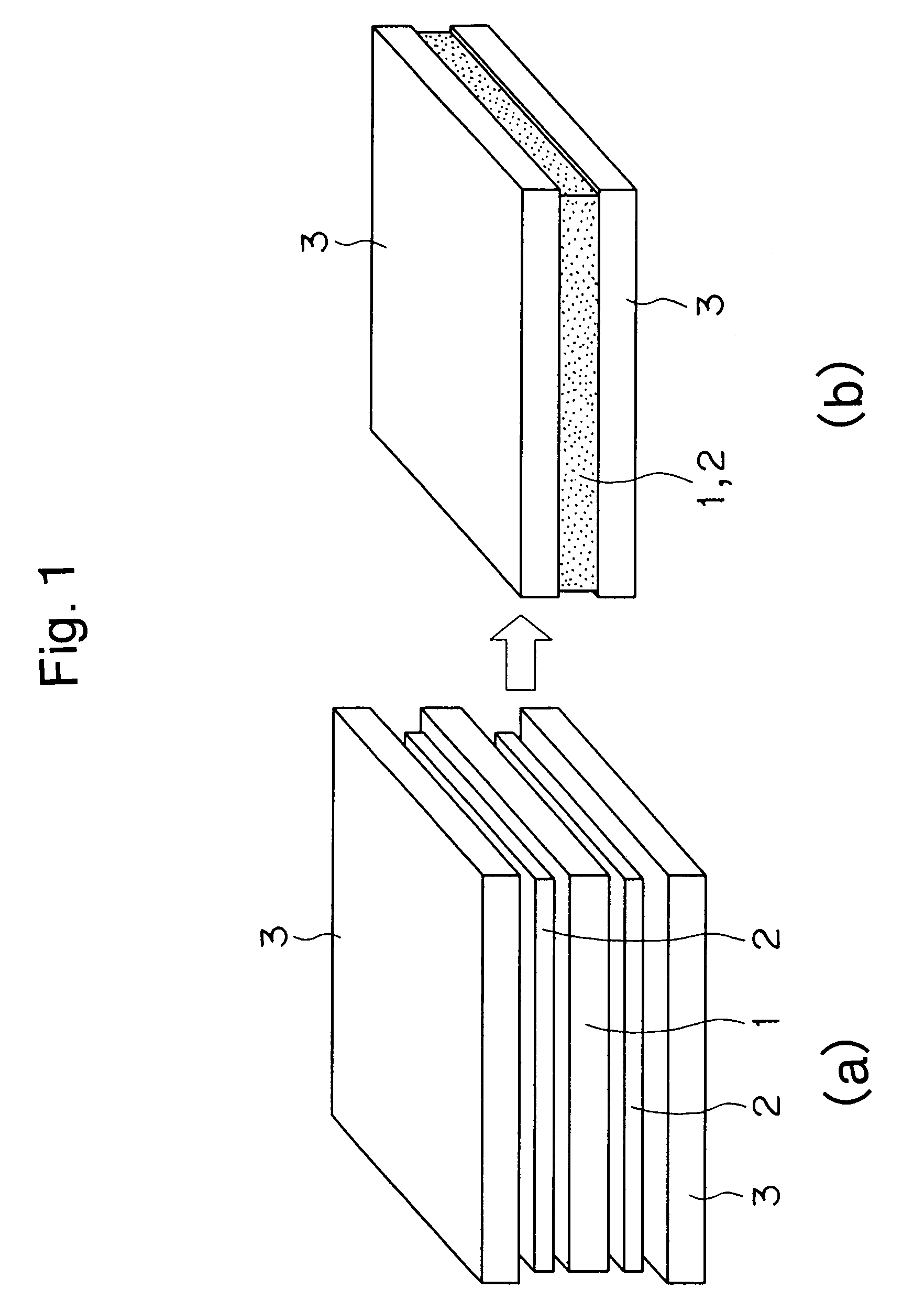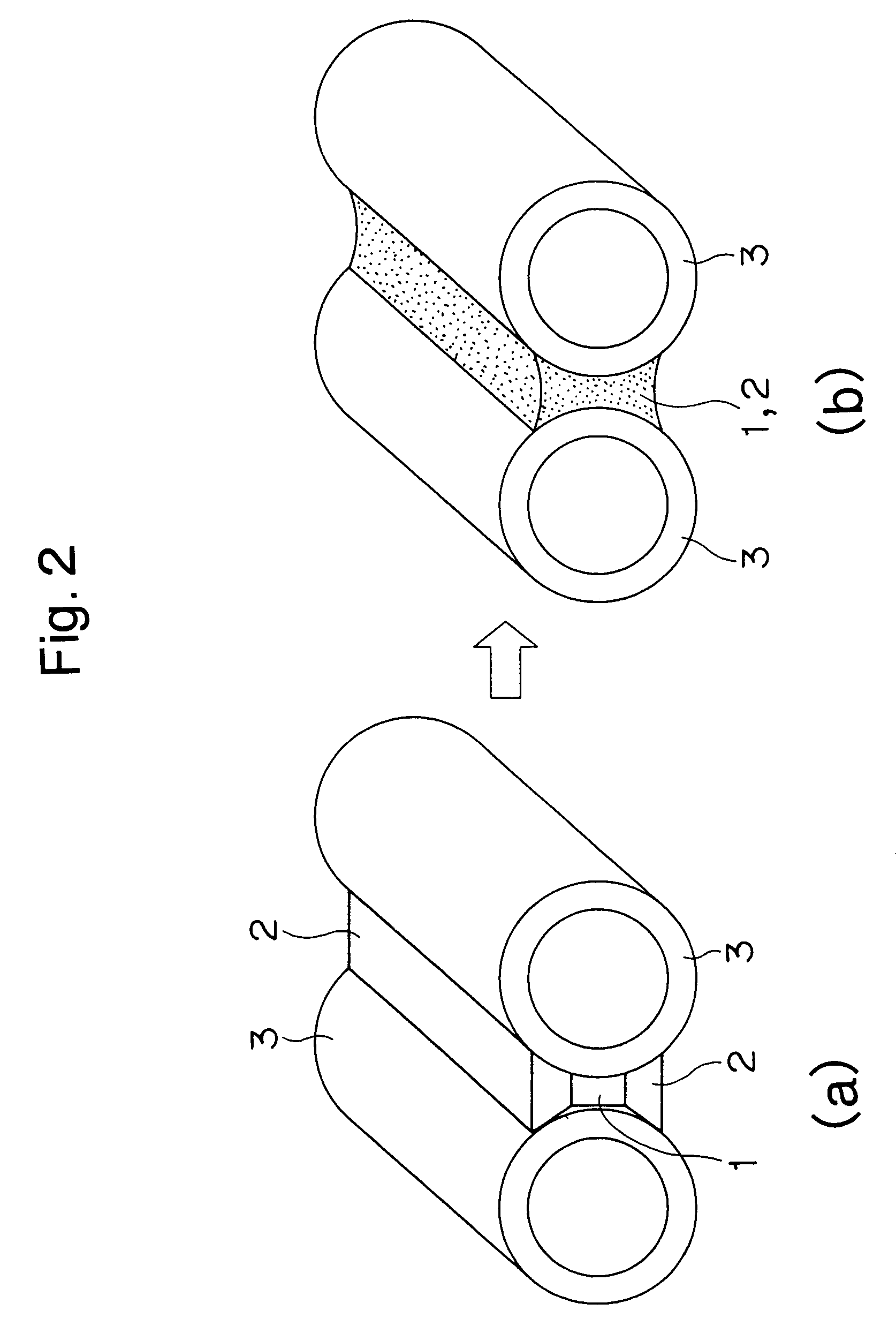Brazing method utilizing metallic porous materials
a porous material and brazing method technology, applied in the direction of non-electric welding apparatus, manufacturing tools, solventing apparatus, etc., can solve the problems of insufficient utilization of porous materials in the area of brazing, inability to fully utilize these materials, and inability to fully utilize these porous materials, so as to achieve the effect of strengthening the bonding section and easing the stress of various kinds
- Summary
- Abstract
- Description
- Claims
- Application Information
AI Technical Summary
Benefits of technology
Problems solved by technology
Method used
Image
Examples
example 1
[0019]Nickel powder was penetrated into urethane and sintered at 1,300° C., then the soft metallic porous material (Nickel mat) 1 was obtained. This porous material 1 can be sintered after silver solder 2 (700-950° C.) is penetrated. The thickness of this metallic porous material was 1.5 mm. Material to be brazed 3, SUS 304 stainless steel plates were used in this example. The term “SUS 304” refers to austenite stainless steel in accordance with the JIS (Japanese Industrial Standard) having Cr of 18% and Ni of 8%.
[0020]As shown in the figure before brazing ((a) in FIG. 1) in FIG. 1 porous material 1 was processed by pressure and thickness of this material became 0.4 mm from the original thickness 1.5 mm. This 0.4 mm is larger than normal appropriate thickness. The porous material 1 can be processed easily to the desired thickness.
[0021]The porous material 1 of 0.4 mm was placed between two stainless plates 3, the porous material 1 was sandwiched by silver solder 2 and heated in furn...
example 2
[0023]As shown in FIG. 2 two tube type stainless steels (SUS 304) 3 and 3 were brazed using the same materials in EXAMPLE 1. ((a) in FIG. 2). The term “SUS 304” refers to austenite stainless steel in accordance with the JIS (Japanese Industrial Standard) having Cr of 18% and Ni of 8%.
[0024]As a result two tubes 3 and 3 were strongly brazed by metallic bonding between nickel and solder same as EXAMPLE 1. ((b) in FIG. 2).
[0025]Although the porous material 1 was manufactured by nickel in the examples above, it is obvious that other metals or metal alloys consisting of Cu, Ti, Al, Ag or W can be used as the porous material.
[0026]Although silver solder was used as the solder 2 in the examples above, other solders can be used. For example nickel solder (950-1,250° C.), aluminum solder (580-610° C.), Sn—Ag solder (300-500° C.), gold solder (1,000-1,300° C.) etc. can be used.
PUM
| Property | Measurement | Unit |
|---|---|---|
| thickness | aaaaa | aaaaa |
| thickness | aaaaa | aaaaa |
| thickness | aaaaa | aaaaa |
Abstract
Description
Claims
Application Information
 Login to View More
Login to View More - R&D
- Intellectual Property
- Life Sciences
- Materials
- Tech Scout
- Unparalleled Data Quality
- Higher Quality Content
- 60% Fewer Hallucinations
Browse by: Latest US Patents, China's latest patents, Technical Efficacy Thesaurus, Application Domain, Technology Topic, Popular Technical Reports.
© 2025 PatSnap. All rights reserved.Legal|Privacy policy|Modern Slavery Act Transparency Statement|Sitemap|About US| Contact US: help@patsnap.com



